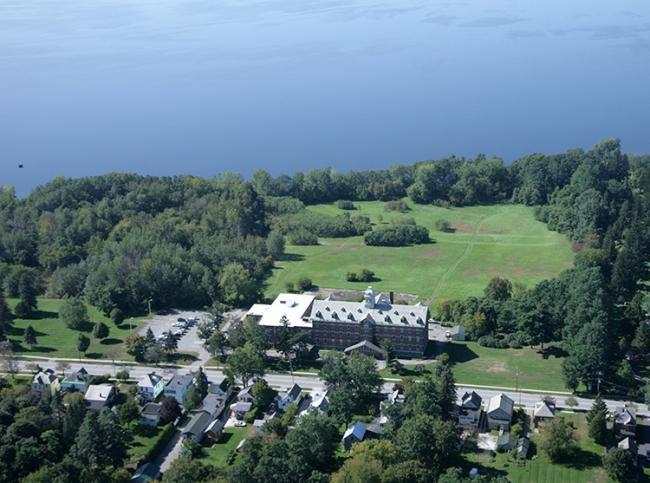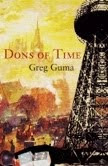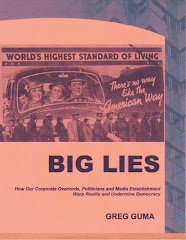For more than half a century humanity has been learning the lesson that "everything is connected." The realization of physical limits to human and material growth, the impact of development and pollution on ecological systems and the atmosphere, the integration of economic systems – no matter what ideology or religion dominates – and the tragic consequences of massive mal-distribution of resources make it obvious that the planet is one organism.
But many proposed solutions to such problems aim to "minimize" the losses rather than acknowledge the responsibilities of interdependence. When faced with famines in under-developed nations, Philip Handler, President of the National Academy of Sciences in the 1970s, publicly proposed that we "give them up as hopeless." Assistance that would "barely manage to keep people alive and hungry" could only lead to tragedy later, he advised.
Although not often voiced so clearly, expressions of "lifeboat ethics" have become more common as humanity grapples with the harsh realities of spaceship earth. Garrett Harden, who coined the term, also provided the basic argument for its implementation.
"We are all the descendants of thieves," he wrote, "and the world's resources are inequitably distributed. But we must begin the journey to tomorrow from the point where we are today. We cannot remake the past. We cannot safely divide the wealth equitably among all peoples so long as people reproduce at different rates. To do so would guarantee that our grandchildren, and everyone else's grandchildren would have only a ruined world to inhabit."
 |
| The Trilateral Commission's EC meets with President Ford in 1974; to Ford's immediate left, David Rockefeller and Zbigniew Brzezinski. |
Until an effective world government is established, Harden argued, a harsh ethic is unavoidable. And the first step? Control of reproduction. To ensure compliance, Paul Erhlich linked population to food in his controversial book The Population Bomb. "We may have to announce," he wrote, "that we will no longer ship food to countries unwilling or unable to bring their population increases under control." Other schemes since then have involved exchanges of needed technology and resources in return for commitments to limit reproduction.
The thing is, green plants form the basis of food chains, and it takes more green plant production to support citizens of developed countries. In 1980 North Americans used about six times the green plant production of the average Indian. India has begun to catch up since then, but the math remains pretty simple: 500 million more people in developed countries will use up the same amount of green plants as up to three billion in underdeveloped countries.
Advocating population control in less developed regions without radically changing habits of consumption in highly industrialized countries wouldn't just be unfair. It would be futile.
Such considerations have nevertheless failed to deter various open conspiracies to create world order from pursuing their grandiose plans. Beginning in the 1970s two of the most prominent were the Trilateral Commission, representing the "new breed" of corporate internationalists, and the Club of Rome. The Commission, which played a prominent role during the Carter presidency and re-emerged in Age of Obama, generated a series of policy proposals based on global power sharing between three poles of economic power – the US, Western Europe, and Asia. According to Samuel Huntington, a prominent trilateral theorist, limits would have to be placed on political democracy, a goal that would require lower public expectations and greater executive power.
The Club of Rome returned to Plato's ethical aristocracy as a model for its solution to world crises. According to founder Aurelio Peccei, politicians and businessmen are too nearsighted to take a long view of global management. What is needed instead, he argued, is the "civilized traditions of a ruling class," implemented by technocrats, diplomats and government officials, "men of influence" able to see the shape of a post-industrial world. At least he was candid.
In the early 1990s, President George H.W. Bush inadvertently helped stimulate public discussion about global management by calling for a "new world order." The term was an unfortunate translation of the Nazi call for "Nie Ordnung," which had set the tone for German expansionism. As the US was staging Gulf War I — then the largest military campaign since World War II – Bush promised that, once Iraq was defeated, the world could turn its attention to peaceful approaches, world law and human rights. But even his "points of light" version of world order depended on a military stick, and it was really just a soft-sell of "one superpower order."
Some theorists and thinkers suggest that the US can no longer impose its will by economic means, that it is evolving into a mercenary state, underwritten and restrained by economic partners and overseers. If so, the next world order could be an updated version of the Trilateral or Kissinger vision. All such variations serve the interests of political and economic elites, while compressing the individual into the mass.
Whether power is centered in one superpower or shared by several, it amounts to the same thing: a global State, increasing its domain and mechanizing more aspects of life as it reduces individual sovereignty.
One slender hope is the slow birth of a new global consciousness, a shift in thinking already underway. The Gaia theory, which grew out of research on the geophysiology of the planet, suggests an alternative, non-mechanistic vision of what it means to be part of a living whole. According to James Lovelock, who was instrumental in developing the idea, the evolution of the material environment and various organisms are part of a single and indivisible process. If that is so, a major task ahead is to recognize, as Elisabet Sahtouris put it, that we are "a body of humanity embedded in, and with much to learn from, our living parent planet, which is all we have to sustain us."
Or, as William Thompson explained in Passages About Earth, we have reached the end of the line for industrial society. Looking over the edge of history, we are discovering that "it's a spiral and that we have turned and are now facing back in the direction of cosmic mythology." Our old maps "take on a new meaning as they warn us, Here be dragons," he warned. "Ecstasy or economics, madness or sanity, mysticism or science: where ancient dragons live modern categories die."
This is an excerpt from Prisoners of the Real: An Odyssey. Greg Guma's second novel, Dons of Time, was published in October 2013 by Fomite Press.




































